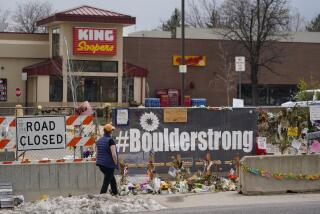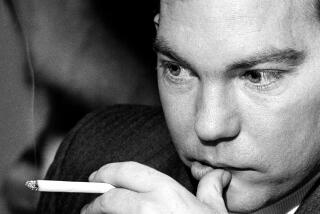Shooting at Ft. Hood evokes deadly 2009 rampage
After shots rang out Wednesday at Ft. Hood, Americans’ memories flashed back to Nov. 5, 2009, when Army Maj. Nidal Malik Hasan opened fire on the Texas base, killing 13 and wounding more than 30.
That remains the deadliest mass shooting on a military base in the U.S.
Wednesday’s incident left at least four dead, including the gunman, officials said, and several were wounded.
In the 2009 incident, Hasan, an Army psychiatrist set to be deployed to Afghanistan, opened fire at the Soldier Readiness Processing Center, where troops deploying to or returning from Iraq and Afghanistan were waiting to see doctors.
Witnesses said Hasan shouted “God is great” in Arabic before he started shooting.
Armed with two pistols, he eventually was wounded by a civilian policewoman, who was also injured in the exchange of fire. He remains paralyzed from the shooting and uses a wheelchair.
Hasan, a Muslim, was motivated by a “jihad duty” to kill soldiers, prosecutors argued at his military court-martial last year. He acted as his own attorney during the trial, rarely challenging prosecutors.
In opening arguments, Hasan said he had a duty to kill fellow soldiers to save fellow Muslims, admitting to the court that he opened fire because his religious convictions had led him to switch sides and take U.S. lives. He declined to testify, however, or to submit much evidence.
By contrast, prosecutors called nearly 90 witnesses and submitted more than 700 pieces of evidence.
The unanimous verdict came after only two hours. Hasan showed no emotion when the jury president, the highest-ranking colonel on the panel, announced the death sentence, a rarity in court-martials. More than half a dozen victims’ relatives looked on inside the courtroom.
When the colonel was finished, Hasan stared straight ahead, blinking. He was transferred to Ft. Leavenworth, Kan., where he became the sixth inmate on military death row at the time. No military death row inmate has been sent to the death chamber since 1961.
Years before his sentence, Hasan had told a military mental health panel that being executed would make him a martyr. But during closing arguments, a military prosecutor insisted that a death sentence was not martyrdom.
“He is not now and will never be a martyr,” said the prosecutor, Col. Michael Mulligan. “Do not be fooled. He is not giving his life -- we are taking his life. This is not his gift to God. He is a criminal -- a cold-blooded murderer.”
Present for at least one of Hasan’s conviction and sentencing hearings were retired Army Sgt. Howard Ray, who received the Army Commendation Medal for carrying nine people to safety during the shooting, and Keely Vanacker, daughter of Michael Cahill, 62, the lone civilian killed.
The 2009 Ft. Hood attack took place not far from another mass shooting nearly two decades earlier. In 1991, a man smashed his pickup truck through the front window of Luby’s Cafeteria in nearby Killeen, firing on a lunchtime crowd with a high-powered pistol. The gunman, George Hennard, killed 22 people and wounded at least 20 others.
sp;
More to Read
Sign up for Essential California
The most important California stories and recommendations in your inbox every morning.
You may occasionally receive promotional content from the Los Angeles Times.











